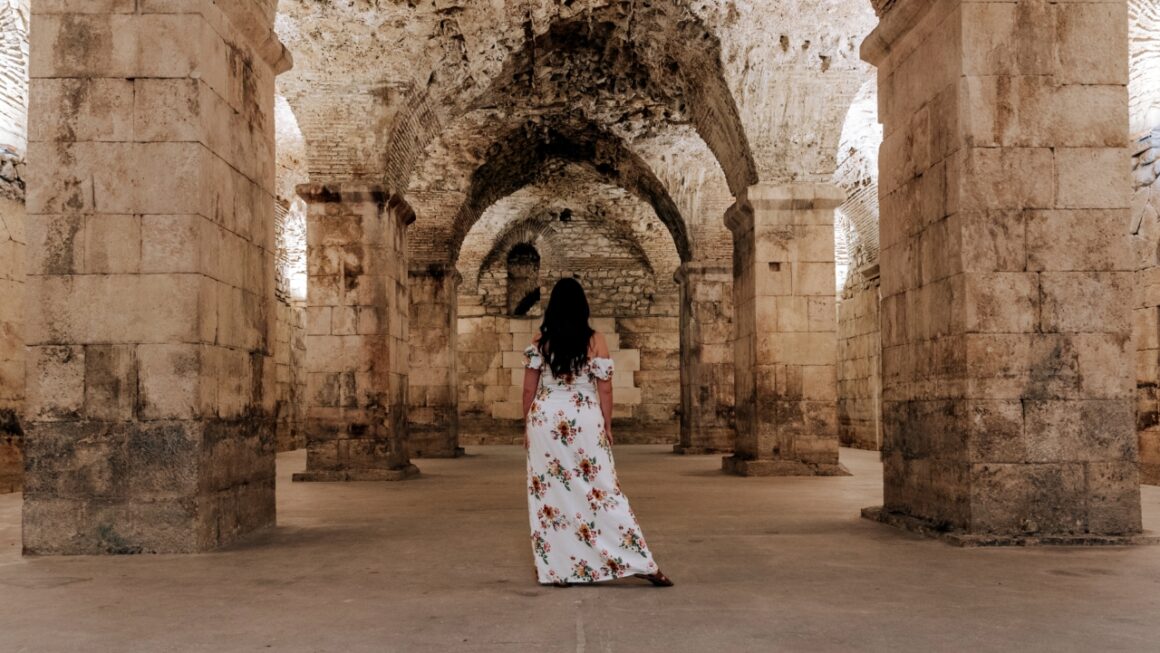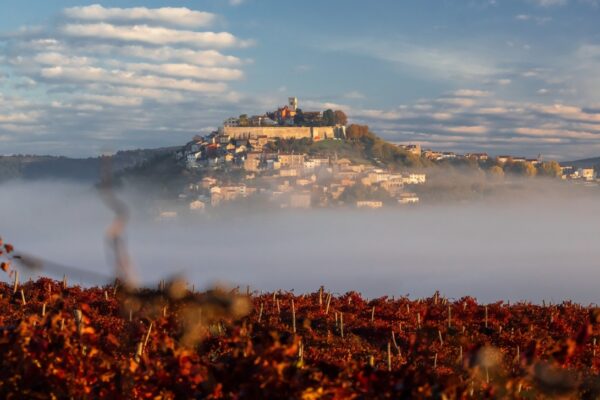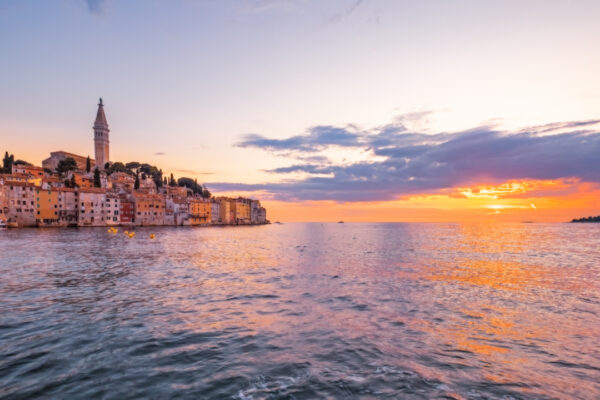A rich historical heritage is often one of the main criteria for many people when choosing their next holiday destination. The number of curious visitors is growing when it comes to destinations known for archaeological finds of world importance. Such cultural and historical heritage includes the monuments of the Roman Empire.
However, for many, a stay by the sea is just as important for an ideal holiday. That’s why we’ve decided to combine the two and introduce you to three coastal towns with the most fascinating Roman monuments – Pula, Zadar and Split. We will explore which Roman monuments you can visit during a stroll through the city centre and see the undeniable contribution of the Romans to the face and culture of these cities.
Pula
The Roman Empire is where the urban history of Pula begins. Its first official name was Colonia Pietas Iulia Pola. The legacy of the ancient Romans is still visible in almost every corner of the wider city centre. The monuments of this legacy are well known: from the Arch of the Sergii to the Temple of Augustus, from the Small Roman Theatre to the Double and Hercules Gates. The most famous Roman monument is undoubtedly the amphitheatre, the Arena in Pula, which, until the introduction of the euro, was featured on the back of the 10 kuna banknote.
Pula Amphitheatre
The magnificent amphitheatre is usually the starting point for sightseeing in Pula. It is the sixth largest Roman amphitheatre in the world. It’s also the only one whose three architectural levels have been completely preserved. It was built in the 1st century, during the reign of the Roman emperor Vespasian. According to one story, Vespasian built it in honour of his great love, Antonia Cenida from Pula. Another legend says that Istrian fairies brought stones from Učka at night to build it. Until the ban on gladiatorial shows in the 5th century, gladiatorial fights were held there, as well as public trials of bandits who had to fight with beasts in front of 23,000 spectators.
Nowadays, Pula’s Arena is used for summer festivals and top-class concerts of popular and classical music. Particularly attractive are the gladiatorial fights held every week during the summer as part of the Spectacvla Antiqva spectacle.
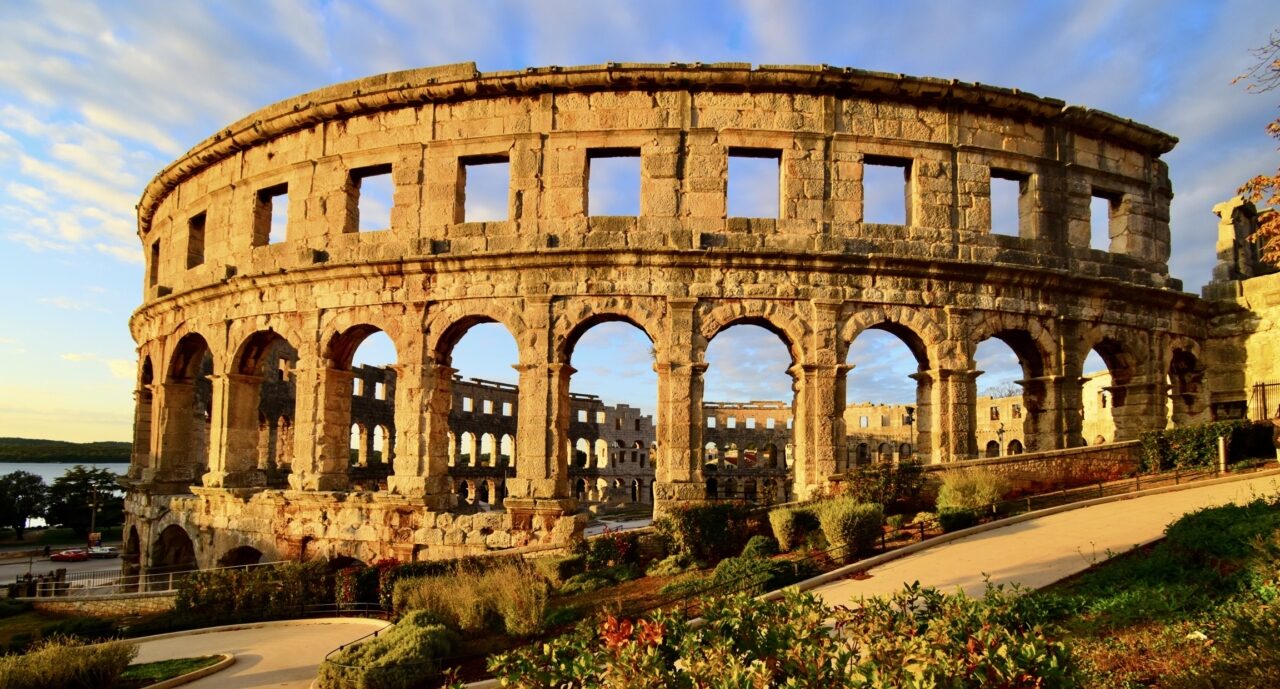
The Arena of Pula
Arch of the Sergii
Also called the Golden Gate, the Arch of the Sergii is one of the most important monuments of Pula. It was built between 29 and 27 BC by Salvia Postum from the powerful family of Sergii. She dedicated it to three male members of the family after their deaths and financed it with her own money. This is evidenced by part of the text carved on the triumphal arch (“de sua pecunia”). The west façade overlooks the city. It is therefore more richly decorated than the east façade. The eastern side was next to the city gate. It was therefore not decorated for the eyes of passers-by.
Temple of Augustus
On the way from the triumphal arch to the “shining giants” of Pula’s harbour is an ancient building and one of the most beautiful examples of ancient Roman sacred architecture, the Temple of Augustus. Built between 2 BC and 14 AD, it was dedicated to the goddess Roma and the emperor Augustus.
The function of this building has changed throughout history. In late antiquity it became a Christian church, then a granary, and in the early 19th century it was converted into a stone museum. During the Second World War it was hit by a bomb and completely destroyed. It was successfully restored in 1947. Today it houses a small exhibition of ancient stone and bronze sculptures.
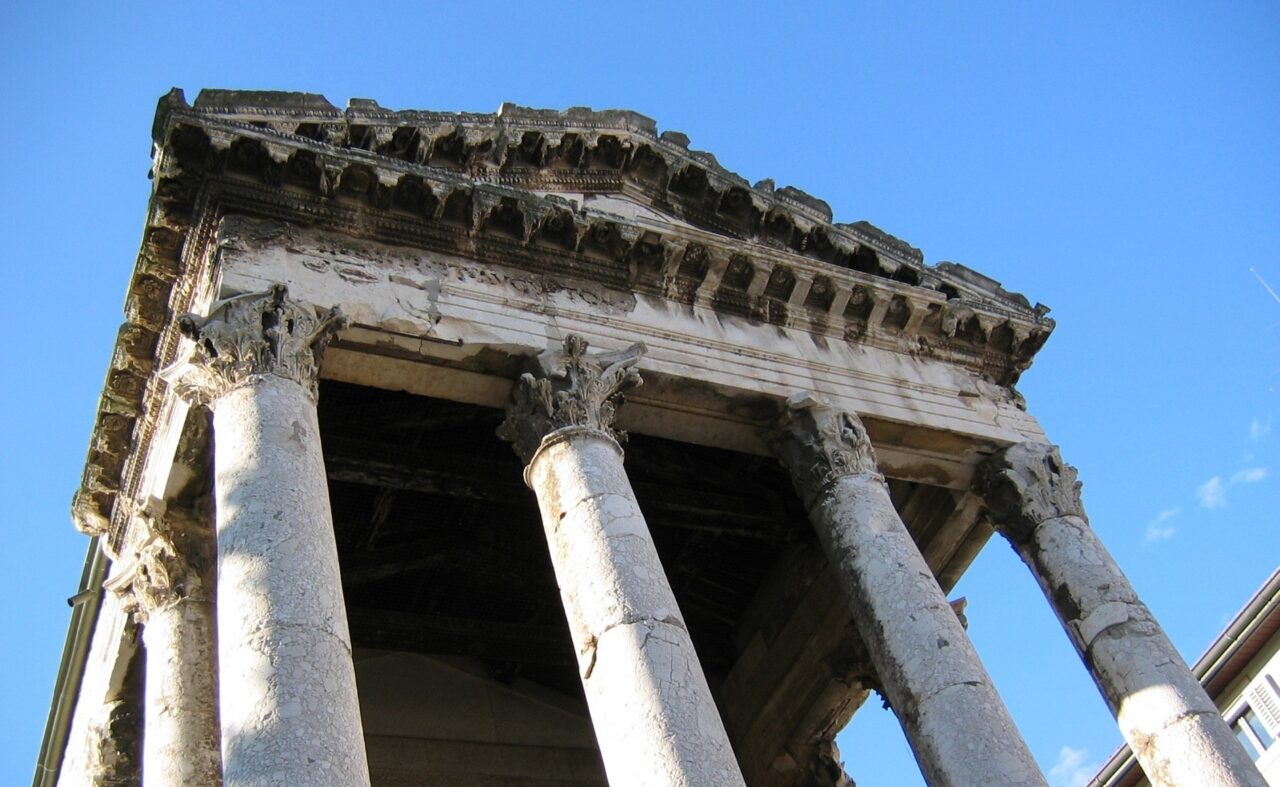
The facade of the Temple of Augustus in Pula
If you’d like to combine exploring Istria’s Roman remains with staying in a unique accommodation whose history also dates back to ancient times, Villa Covri near Novigrad is an excellent choice. This villa from our collection of villas with a pool has been awarded as the most beautiful accommodation in Croatia. Built in the 16th century as a farmstead, it is a valuable part of Istria’s cultural and historical heritage, thanks to the renovation that preserved Istrian antique elements. For example, you will find one of the best-preserved stone entrances with a terrace (baladurs) in Istria, as well as the original stone floor from the 16th century. After visiting the Roman monuments, you don’t have to end your exploration of history by returning to your accommodation.
Zadar
The city of Zadar boasts a history of over two thousand years. From 59 BC, Zadar was a Roman municipality, and then it became a colony of Roman citizens – Colonia Julia Jader. At that time, the city adopted a typical Roman structure with a central forum and a typical roman street structure.
Forum
The Forum is one of the most impressive monuments from the Roman period that you can visit on the Croatian coast. It was built from the 1st century BC to the 3rd century, when the Roman emperor Augustus was in power. As in any typical Roman city, the Forum was the main square and the heart of city life and culture. It was a place where Romans gathered, traded, discussed politics and socialised.
To this day, the stairs, pavement and two monumental columns remain in the 90 x 45 metre square. One of the columns was used as a pillar of shame in the Middle Ages. Today you can have a stroll through the ancient ruins and experience a bit of the ancient Zadar atmosphere.
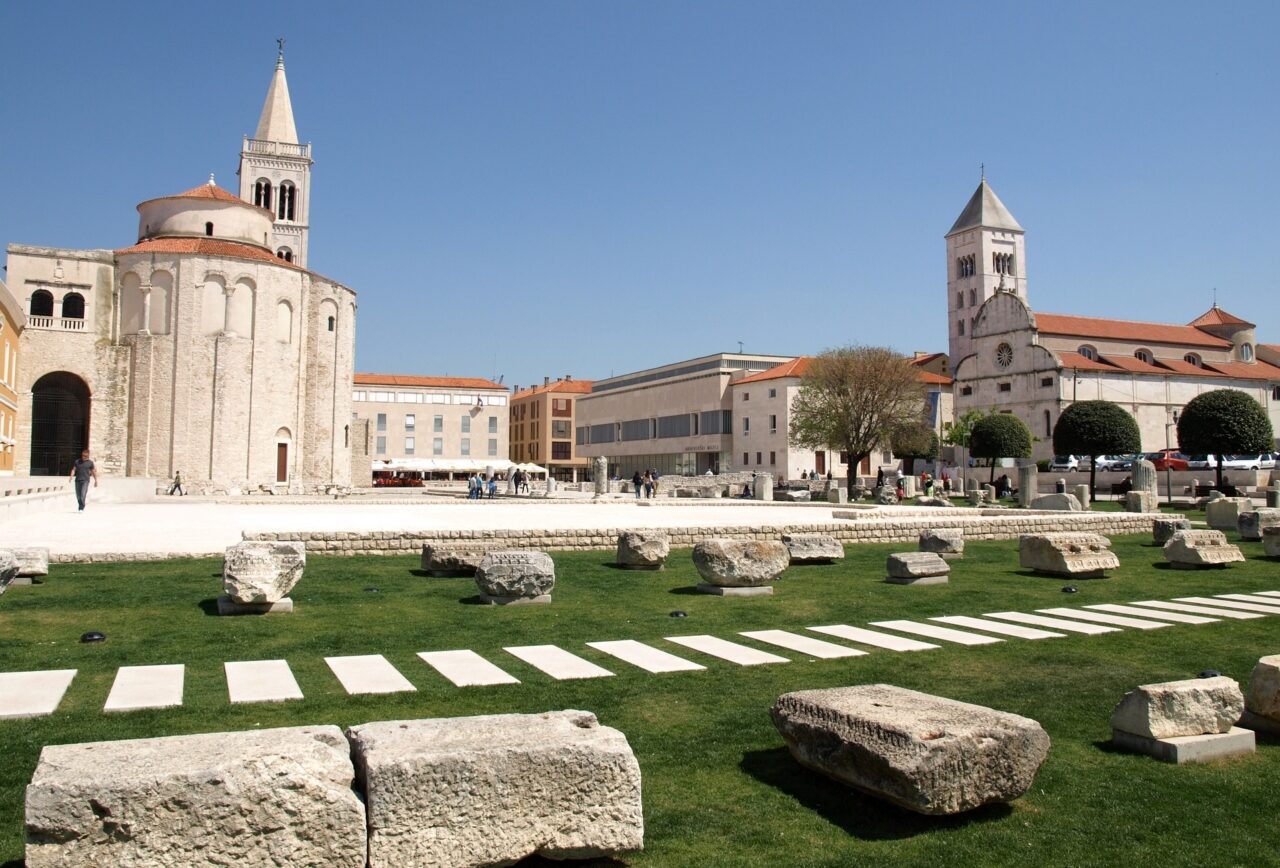
The Forum in Zadar
Kalelarga
After visiting the Forum, take a walk along one of Croatia’s most treasured streets, Kalelarga or Široka ulica (meaning, “the wide street”). In Roman times it served as one of the main roads (decumanus maximus) and connected the city gate with the forum. It will lead you to another place whose roots go back to Roman times – Petar Zoranić Square. There is one of the columns moved from the Forum, and the remains of a Roman wall with a simple gate are partially preserved west of the square.
A visit to the Archaeological Museum and the Museum of Ancient Glass will complete the experience of the ancient face of this impressive coastal town.
Roman villas by the sea
The Roman heritage of Zadar and its surroundings also includes luxurious villas. Numerous archaeological remains of Roman seaside villas have been found in these areas, as well as in the rest of Dalmatia and Istria. They were built after Julius Caesar started Romanisation. The Romans called them villae maritimae. The tradition was preserved and today they are the most popular luxury accommodation for visitors worldwide. Villas with pools are the most sought after for obvious reasons. The pool provides a place for fun, relaxation, socialising and refreshment during the summer months. Plan your next holiday in stunning Zadar and check out our villas with an outdoor pool.

The remains of the Roman villa, the town of Nin near Zadar
Split
According to many sources, the city of Split began its development as the Greek colony of Aspálathos between the 3rd and 4th centuries BC. However, the Roman emperor Diocletian is considered to be the true founder of the city. Why is that? Around the year 300, he built an imperial residence, which was then transformed into the fortified city of Spalatum, now Split.
Diocletian’s Palace
This famous imperial residence, now known as Diocletian’s Palace, is one of the best-preserved Roman complexes in the world, thanks to the continuous use of its areas in everyday city life. For this reason, the old centre of Split, including the Palace, was included in the UNESCO list of cultural heritage sites in 1979.
The palace covers an area of almost 40,000 square metres, and the building materials came from the immediate vicinity, from the island of Brač to the town of Trogir. With its specific composition, it is the most reminiscent of a fortified military settlement – a castrum. The whole area was divided into two parts, and each part had its own purpose. The southern and more luxurious part was for the imperial family, while the northern part contained buildings for servants and the army. The palace had its own water conduit. It was about 9 kilometres long and can still be seen. Today, the Aqueduct of Diocletian is the best-preserved Roman aqueduct in Croatia and beyond.
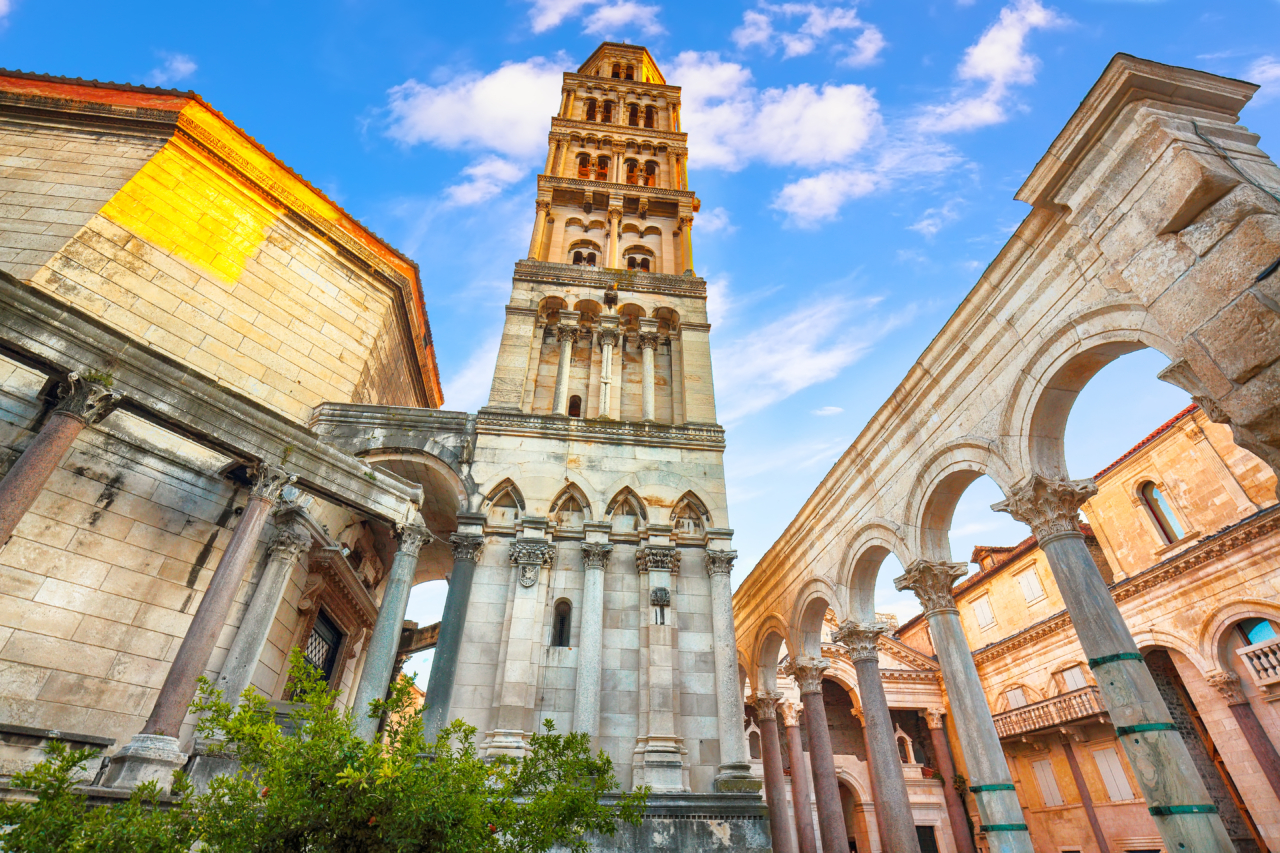
Many Roman monuments can be found inside Diocletian’s Palace.
Peristyle and cellars
Inside the walls of the palace there are several entrances. There is a treasure trove of archaeological and cultural monuments to be discovered. In front of the emperor’s apartment was the Peristyle, the central square. Here you will find the magnificent Cathedral of St. Duje, which originally served as the mausoleum of the emperor Diocletian. It is also the oldest Catholic cathedral in operation in the world. At the Peristyle you can also visit one of the temples which occupied the site – the Temple of Jupiter, whose entrance is still graced by a sphinx brought from Egypt on the emperor’s orders. The cellars of the palace are among the best preserved of their kind in the world. They are now open to the public and are often used for cultural events. Diocletian’s Cellars were also used as one of the filming locations for the TV show Game of Thrones.
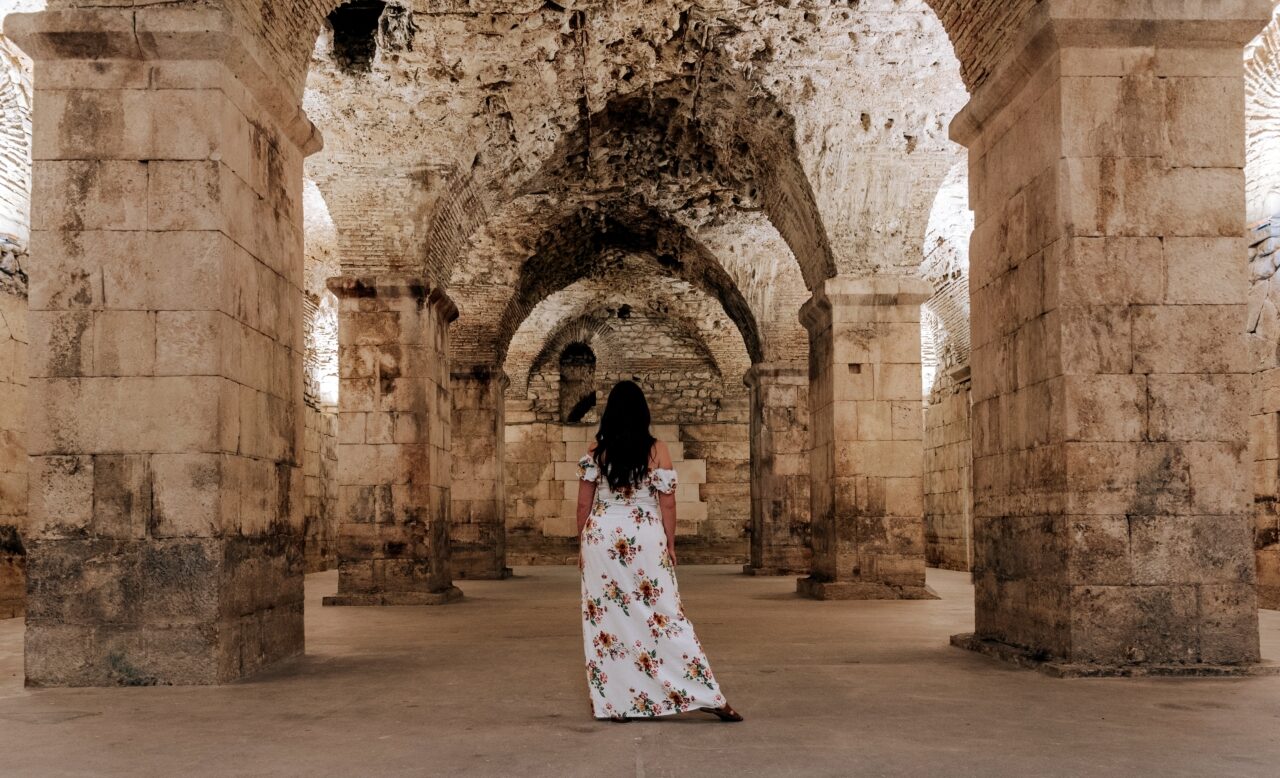
Diocletian’s Cellars are open to the public throughout the year.
Roman monuments overlooking the sea
You can almost travel back in time two thousand years on a historical tour of Pula, Zadar and Split. Each in its own way testifies to the greatness of the Roman Empire – Pula with its imposing Arena, Zadar with its unbelievably well-preserved Forum, and Split with a city centre that is considered a top world heritage site.
The fact that they are located by the sea is a great advantage when visiting these cities. This makes them ideal destinations for lovers of the sea and exploration of local culture and history. The ancient Romans themselves were lovers of Mediterranean summers, which is confirmed by the fact that it was they who brought luxurious villas by the sea, i.e., villae maritimae, to the area of today’s Istria and Dalmatia.
If you are planning a visit to one of these towns, be sure to bring your curiosity and comfy shoes for a leisurely exploration of the ancient Roman monuments. And make sure you get the most beautiful accommodation in the style of the ancient Romans – a luxury villa on the Adriatic.
